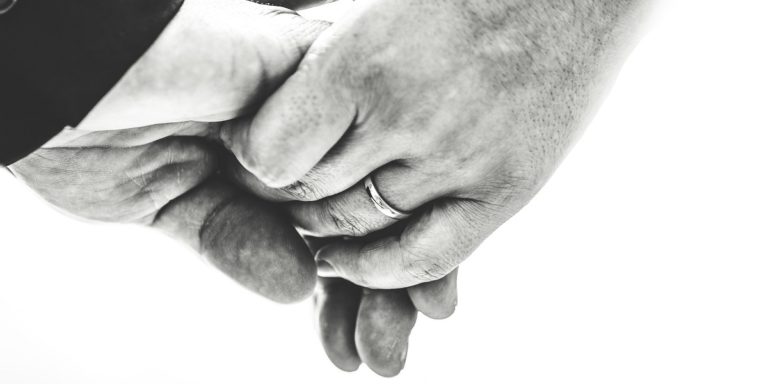
How to change your life experience: Emotion
- Sarah Weber
- June 25, 2020
- Comments Off on How to change your life experience: Emotion
Links in some blog posts may earn a commission for The Brain Cleanup Coach.
Let’s not forget that the little emotions are the great captains of our lives and we obey them without realizing it. – Vincent Van Gogh
Photo by Nick Karvounis on Unsplash
The hardest emotion I ever had to deal with was when my dad died. I was very close to him, and after a few weeks of illness his death came suddenly. It was the thing I feared most in my life thrust upon me.
That was 13 years ago now. At the time it seemed like there would be no way out of the deep grief and loneliness I felt. But after a while, day by day, the emotional load lightened.
Emotion is created in response to thought. Sadness wasn’t even the first emotional response I had to my dad’s death. It was numbness, created by the thought “this can’t be true.”
Emotion is its own language
Emotions are the chemical translations of your thoughts, created by the pituitary gland in your brain. The chemical cocktail of the emotion is released into your bloodstream, relaying the meaning of your thought to your nervous system.
Your brain has to have a thought prior to your body feeling emotion and emotion is different than sensation.
Human babies are guided by sensation and intuition. When a baby feels hunger, it intuitively knows to cry out. The same goes for pain. It’s not until a child gets a little older and starts to understand the concepts of emotion, and can put a little language to it, that thought actually starts triggering an emotional response.
And as the child grows into an adult, more thoughts layer in creating more complex emotional responses. Take for example hunger. A baby cries at the sensation of hunger to let an adult know that it needs food.
As an adult, that person may have developed an unhealthy relationship with food, and now at the sign of hunger thinks a thought like “I can’t control myself”, with an emotional translation of shame.
You should be happy… not
In modern society there’s been a running narrative for several years that the hallmark of a good life is being happy. This unfortunate misnomer has resulted in creating an unspoken dynamic that if you’re not happy, you’re not doing your life right.
The emotions in your body are designed to ebb and flow. You have a set-point in your body, a spot right in the middle that is the balance. But because you are dynamic, like a boat on water, there is always movement.
Back and forth your emotions go, from positive to negative and back again. That is what your body was designed to do. That is the ebb and flow of living in an organism kept in balance by chemicals.
Sure, sometimes those chemicals can be a little off, but I think more often the case is the loudest humans proclaim ideals, and if the rest of us can’t live up to them we think we’re broken.
Understanding your own emotions, or how those chemical cocktails work in your body, can help demystify the emotional responses you have to circumstances in your life.
Understanding emotion exercise
Here’s an exercise to help you do just that.
Imagine you are talking to a friendly alien that looks very much like a human in form, but it doesn’t have emotions, and would like to try to understand them.
The only way you can help with this is to describe what emotion physically feels like, so the alien can try and imagine what it would feel like in their body. They ask you a series of questions:
- Where exactly do you feel it in your body?
- Does it happen slowly or quickly?
- Does it have a temperature?
- Does it have a color?
- Does it feel heavy or light?
- Does it feel big or small?
- Does it feel like it’s expanding or contracting?
- Does it have a texture?
- How long does it last?
Let’s answer these questions for the emotion of embarrassment. Of course I can only give my personal experience, but you’ll likely find our physical interpretations will have some similarities.
- I feel embarrassment in my face, neck and chest, and it can also drop into my gut.
- It happens quickly, but then fades very slowly.
- It feels hot.
- Its color is bright red.
- It feels light and fast, but then heavy as it fades.
- It feels kind of big, and quickly expansive like an explosion, with a slow contraction.
- Its texture is fuzzy.
- It lasts at least several minutes, and depending on how strong the emotion is to begin with, can come back in smaller waves for several hours.
How does your physical experience with embarrassment compare?
What’s the point in doing this exercise? It grounds you into your body, and requires you to be present with your emotion. When we have a strong emotion rush in, it can feel like the entire universe is subject to it. It colors our perceptions, thoughts, and behaviors toward others.
But if you can remember that it’s nothing more than chemicals creating communication in your body, and that is how a normal, functioning human body works, you can watch the process, rather than getting too dramatic about it. Being present with your emotion and seeing it for what it functionally is allows you to, well, take the emotion out of emotions!
Developing emotional intelligence is a skill, but a skill well worth it if you aspire to become a more enlightened, compassionate human.
Sign up for email
Like my content? I deliver even more through email. Sign up now to get on the list.




